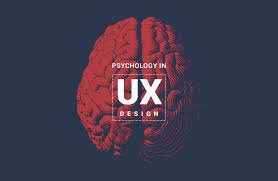Login to leave a comment.

In today’s digital world, people don’t just use apps and websites—they experience them. And what determines whether they stay or leave? How the product makes them feel.
That’s why the best UI/UX designers are part artist, part engineer—and part psychologist.
Designing for Emotion: Why It Matters
People don’t remember every detail of your interface—but they always remember how it made them feel.
For example:
-
Did the app feel warm and welcoming?
-
Was it easy to navigate, or did it cause stress?
-
Did that animation spark a little joy?
Emotion influences memory, trust, and loyalty. A delightful experience builds brand love, while a frustrating one gets deleted in seconds.
Psychology Principles Every Designer Should Know
Here are a few key concepts designers often use to create emotionally intelligent UI/UX:
1. Hick’s Law – The more choices you give, the longer users take to decide.
✅ Use this to simplify menus and remove unnecessary options.
2. Fitts’s Law – The closer and bigger something is, the easier it is to click.
✅ That’s why call-to-action buttons should be large and in intuitive places.
3. The Von Restorff Effect – Users remember what stands out.
✅ Use contrast wisely. Highlight one key action per screen.
4. Cognitive Load – Too much information at once overwhelms the brain.
✅ Break tasks into smaller steps. Use progressive disclosure (like showing more options only if the user wants them).
Micro-Interactions: The Tiny Details That Matter
Ever notice how the heart on Instagram pulses when you like something? Or how a loading screen adds a playful animation?
These micro-interactions don’t just make the product “cute”—they provide feedback, reduce anxiety, and make the interface feel alive.
They’re proof that even small emotional cues can make a product feel human.
Colors and Emotions: Not Just Aesthetic
Colors trigger specific feelings:
-
🟢 Green = calm, success, nature
-
🔵 Blue = trust, stability, professionalism
-
🔴 Red = urgency, attention, excitement
-
🟡 Yellow = energy, warmth, caution
Don’t just pick colors because they “look good.” Choose them because they support the emotion you want the user to feel.
Real-World Example: Duolingo
Duolingo uses humor, a friendly mascot, sounds, rewards, and streaks to create an emotionally addictive experience. It makes learning feel like a game—turning effort into enjoyment. That’s smart UX.
Final Thought: Design With Feeling
Great UI/UX isn't about impressing users—it’s about understanding them. Knowing what frustrates them. What delights them. What motivates them.
If your interface can read the user's mind, reduce their effort, and make them smile—you’ve already won.
0 comments
No comments yet. Be the first to comment!